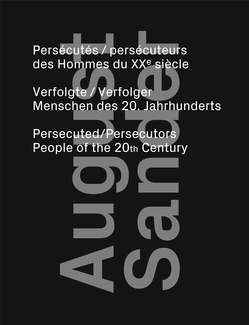The direct, objective style and constant search for truth of August Sander (1876–1964) decisively influenced the history of photography, marking a rupture from the idealized classical style of portraiture. The son of a miner from Herdorf, Germany, in 1910 Sander moved to Cologne and established a studio as a portrait photographer there. During the 1920s he frequented numerous artists, musicians, writers, architects and in particular the Cologne Progressives who shaped his photography. Alongside his commercial work, Sander photographed people from different social and professional spheres under the title “People of the 20th Century.” In 1929 he published Antlitz der Zeit (Face of Our Time), a collection of 60 portraits constituting a sociological inventory of German society in the 1920s, which the Nazis eventually banned. In 1938–39 Sander took numerous identity photographs for Jews in Cologne; after the war he added twelve of these to his oeuvre under the title “The Persecuted.” Sander died in 1964, leaving behind a chronicle and sociological inventory of his time in more than 40,000 photos.
